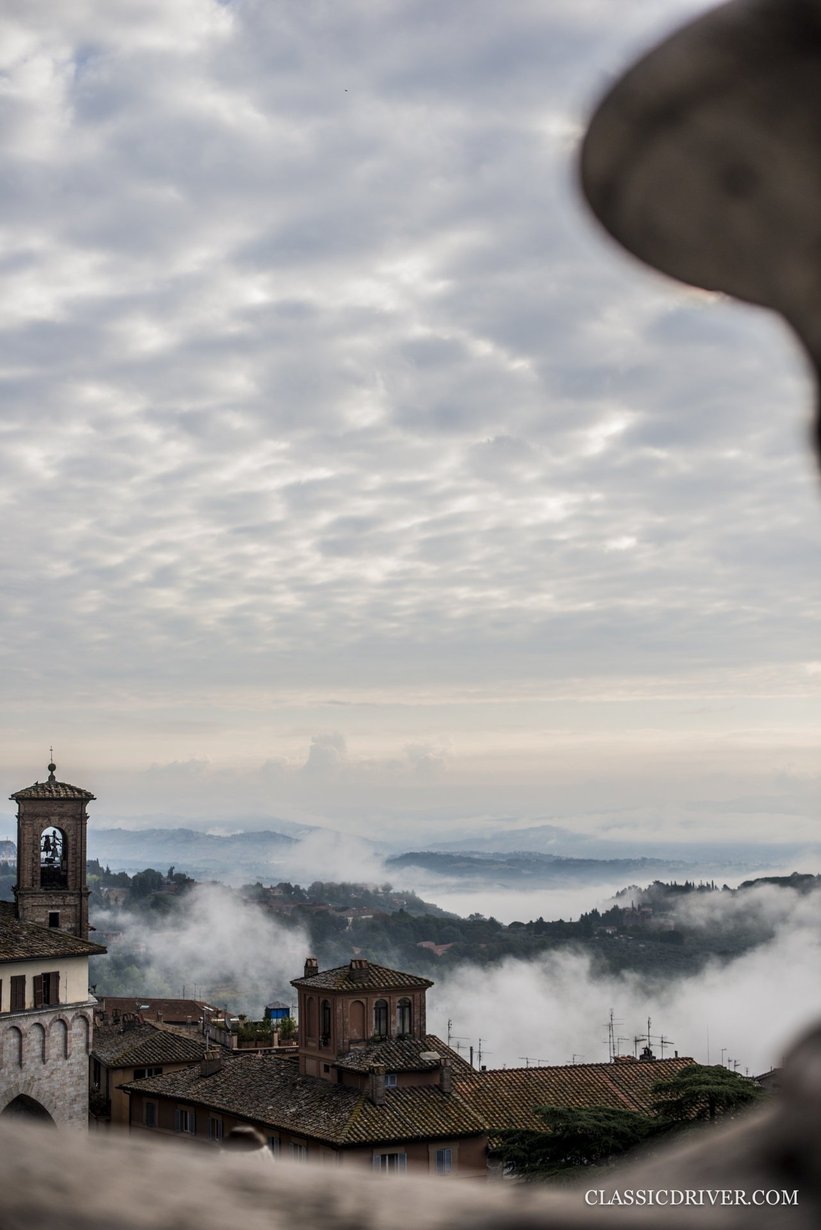
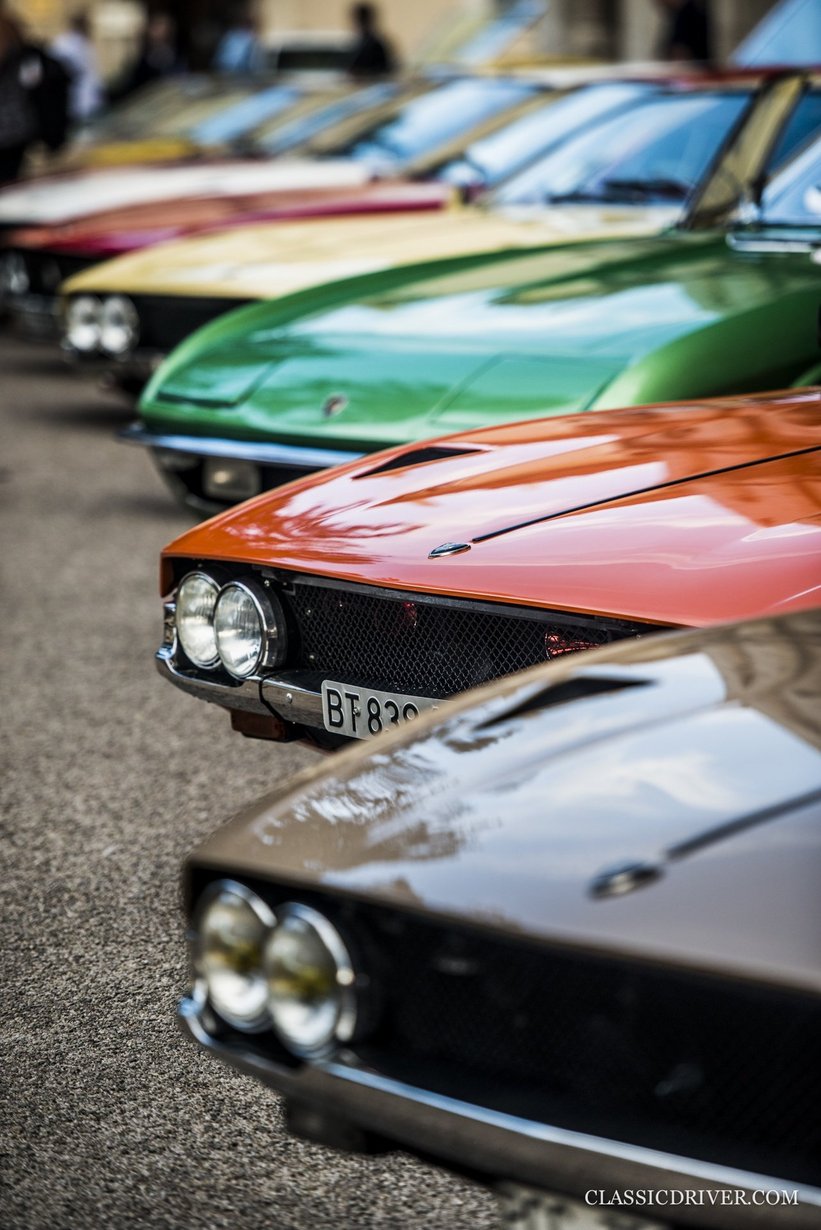
It’s a late summer Saturday morning in the historic centre of Perugia. Above the hills and fields of Umbria, which are visible from up here, the fog still lingers. The Etruscans dwelled here more than 2,500 years ago, before the city fell to the Romans and, later, the popes, who left their fortifications. In the distance you can see the church towers of Assisi – the history of Italy really is within reach.
Beneath the Renaissance artist Pietro Vannucci, whose bronze statue watches over the Giardini Carducci, 21 colourful bodies shine in the morning sun. Bonnets are closed, doors closed, and twelve-cylinder engines ignited with a rich roar, all the while the city’s youth captures the spectacle on their smartphones. Gradually, the unusual procession makes its way through the narrow streets of the old town, before picking up speed towards the gently rolling country roads, which will set the scene for our unique road trip over the next three days.
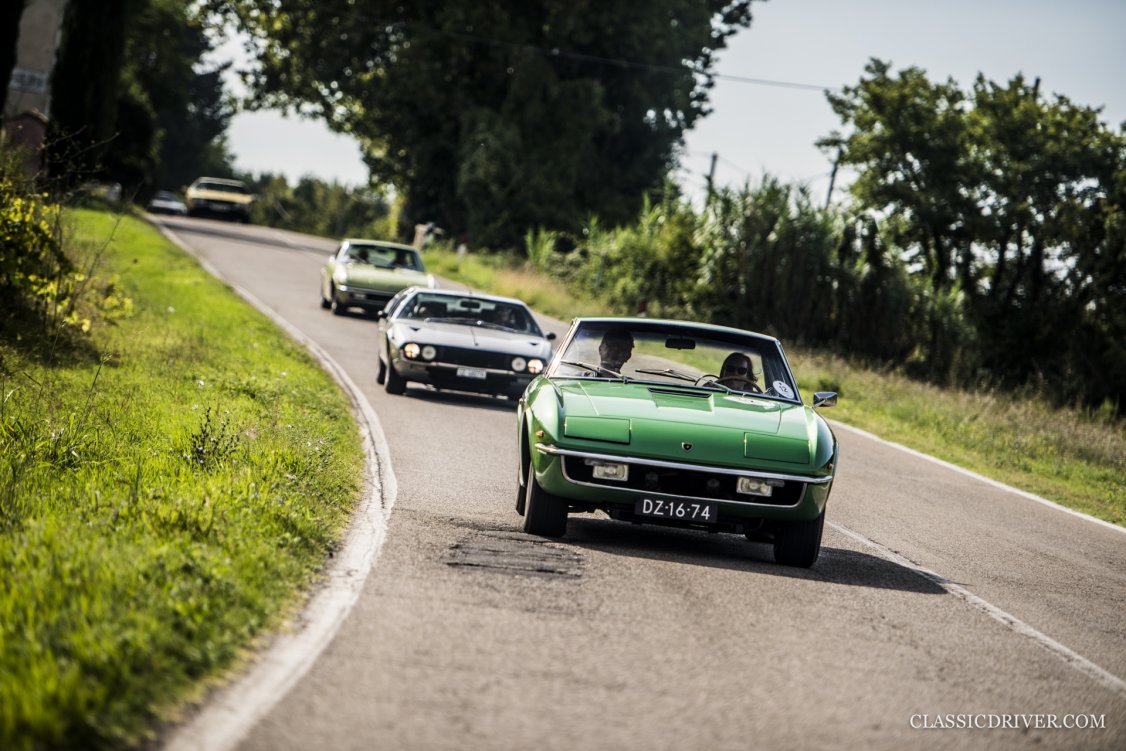
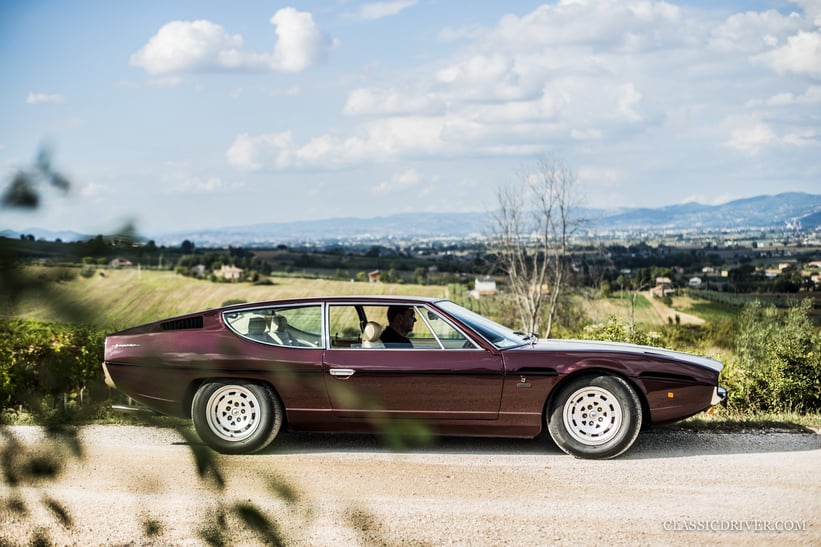
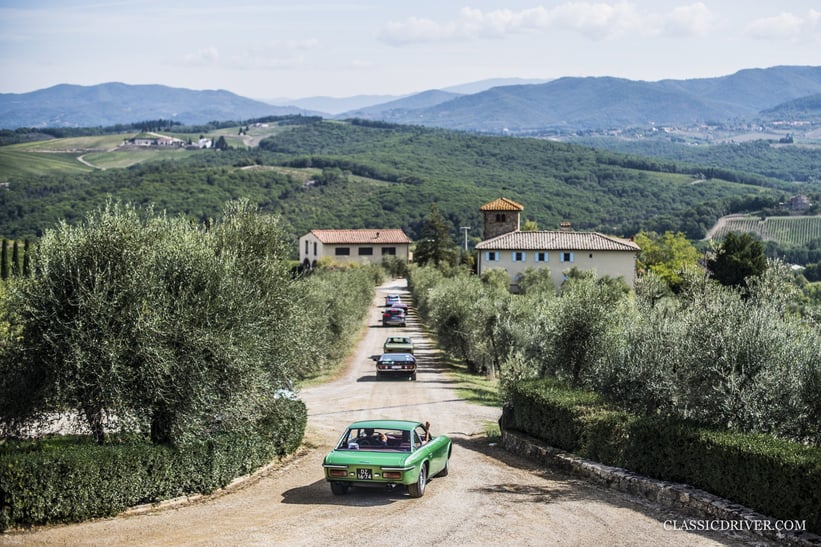
Lamborghini disciples from all over Europe have arrived to celebrate the 50th anniversary of the Espada and the Islero, Lamborghini’s two Gran Turismo models, on a three-day road trip through Umbria and Tuscany. But before we take to the wheel ourselves, it’s important to look back half a century and try to understand these sports cars in their historical context.

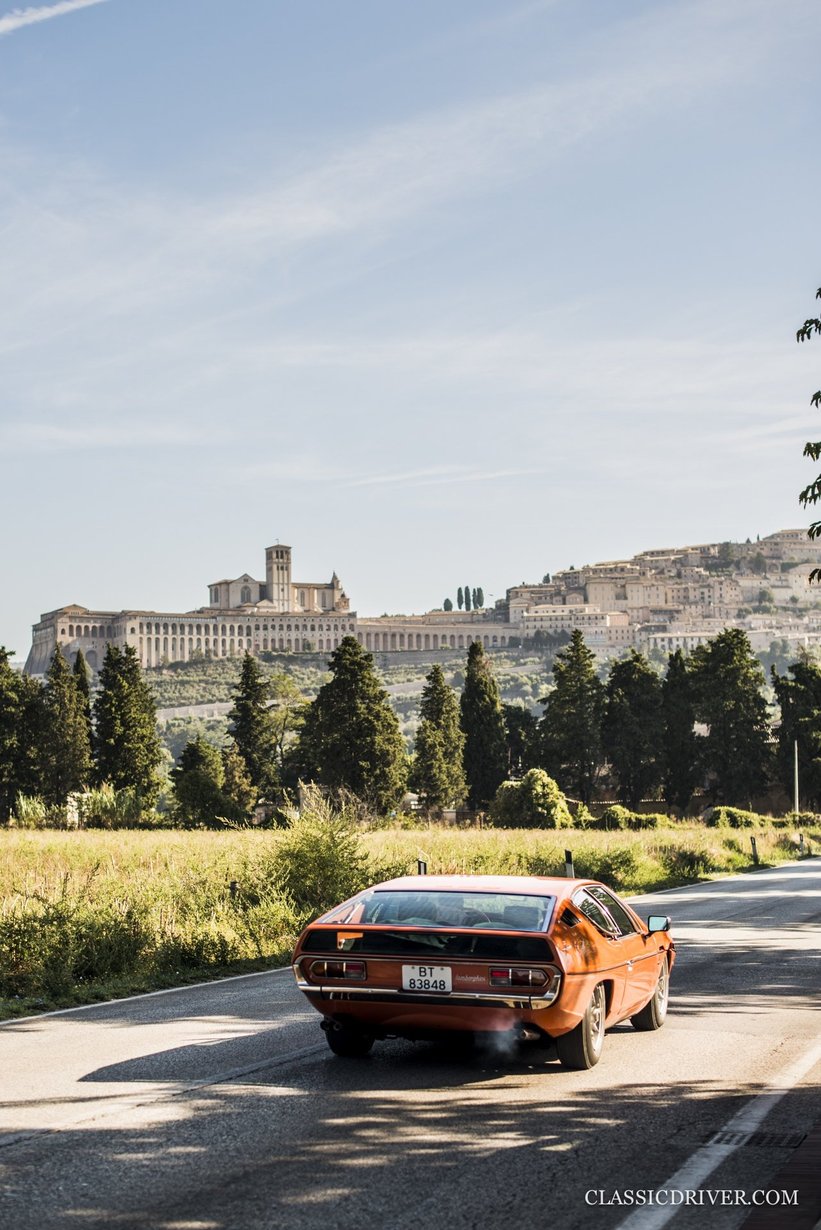
In 1968, while the European youth was revolting against the establishment, Lamborghini presented a hedonistic counter concept at the Geneva salon. The Espada was a four-seater Grand Tourer for the rich and the extravagant, for industrialists and movie stars. It was incredibly flat, wide, and fast. And in contrast to the Baroque four-seaters from Ferrari, Maserati, and Iso Rivolta, it was of straightforward modernity.
Bertone had already presented the revolutionary Marzal prototype in Geneva in 1967. The spaceship-like concept by the young designer Marcello Gandini might not have been put into production, but its unconventional – and, today, still impressive – proportions did serve as a template for the Espada. Based on a largened 400 GT chassis, it was equipped with a 325HP V12. On Europe’s roads in the late 1960s, the fast family sports car must have seemed like an alien phenomenon.
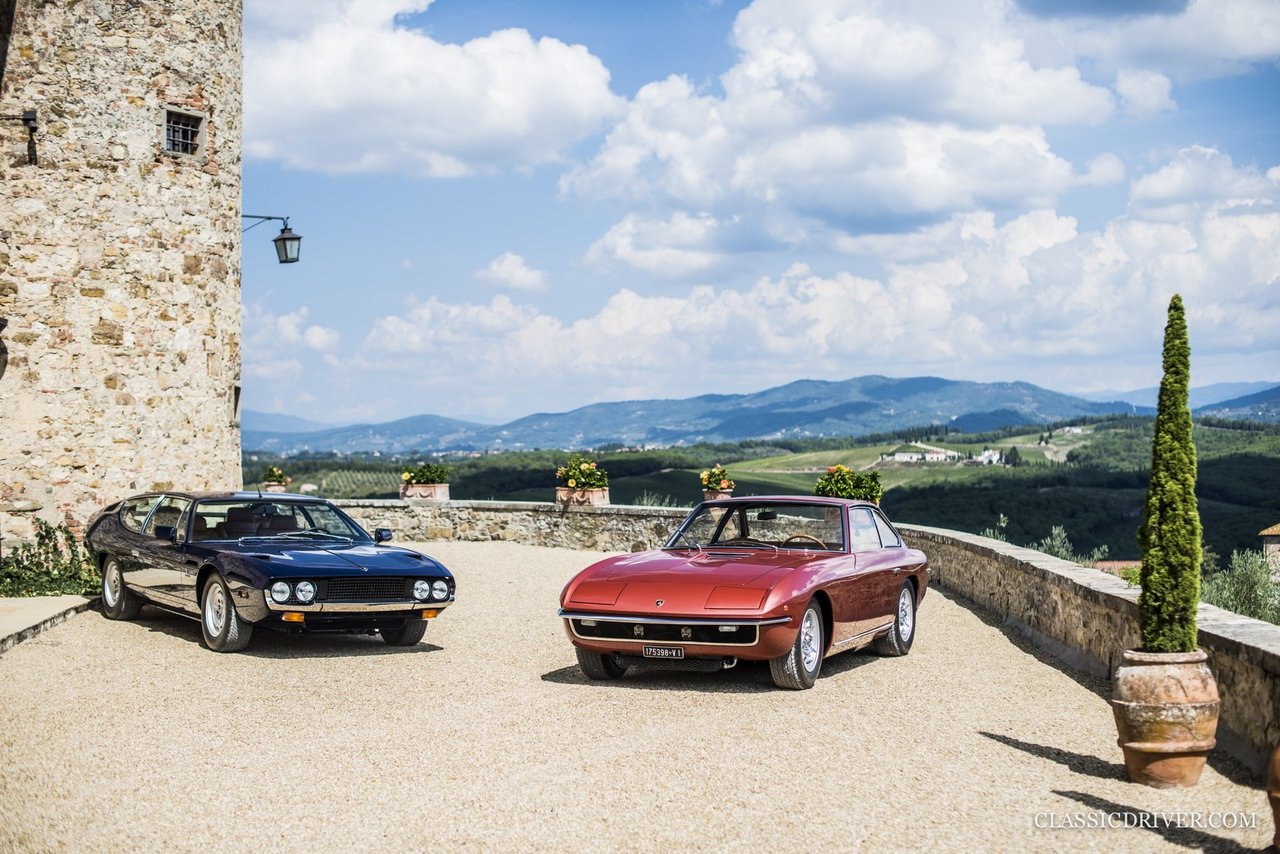
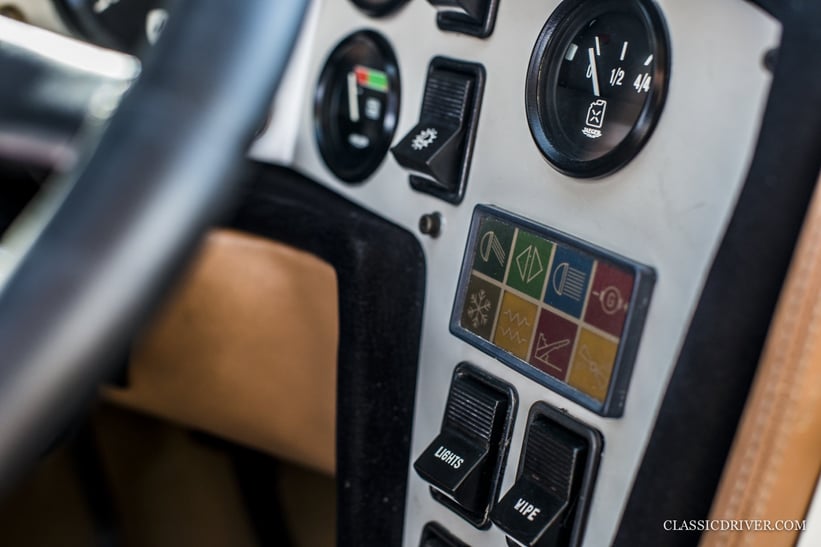
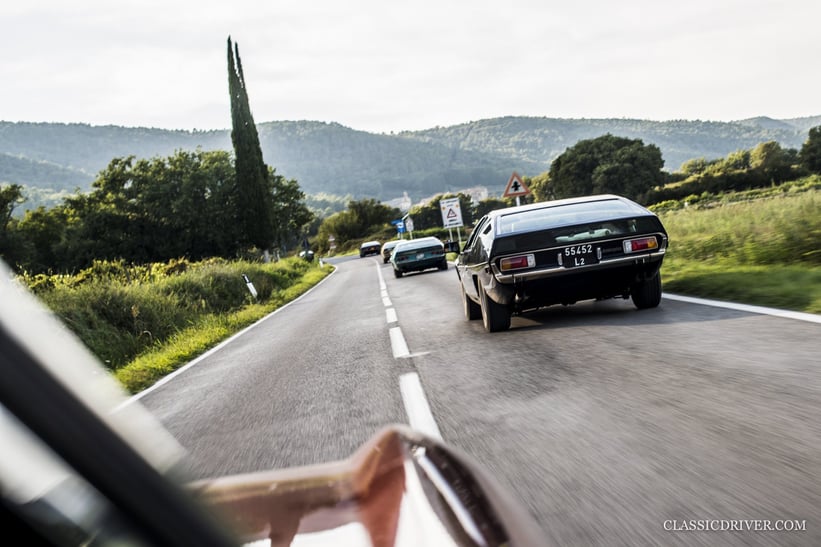
The Espada wasn’t the only new model from the then-five-year-old Automobili Lamborghini at Geneva in 1968. Following the 350 GT and 400 GT models, which were designed and built by Carrozzeria Touring, the smaller Carrozzeria Marazzi was commissioned with the development and production of their successor. Less spectacular than the Miura or the Espada, the Islero was still an elegant replacement for the 400 GT.
Despite its firmer suspension, bigger brakes, and better all-round visibility, the sporty Grand Tourer was denied huge sales success. While Lamborghini built more than 1,220 Espadas over the course of a decade, just 225 Isleros rolled off the line and production was stopped at the end of 1969. Even Roger Moore, who drove an Islero S in The Man Who Haunted Himself a year later, could not inspire any further buyers.
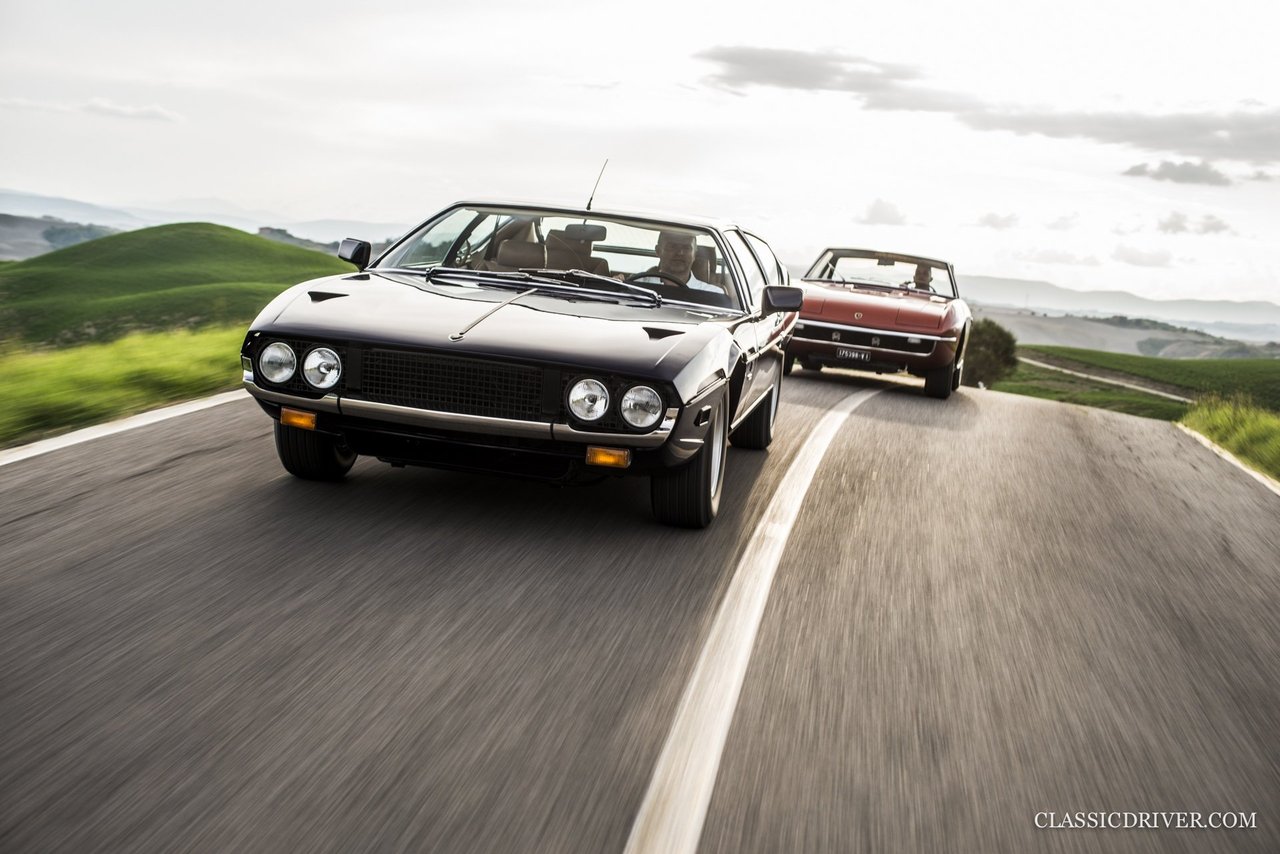
On day one of the Jubilee tour, we take the wheel of an Espada Series 3. Built in 1972, the four-litre ultimate iteration of the Espada developed a whopping 350HP. With its revised springs, new disc brakes, and power steering on request, the Espada corresponded directly with the requirements of Lamborghini’s solvent clientele. And features such as the aluminium dash inserts, rather than wood, were in line with the spirit of the era.
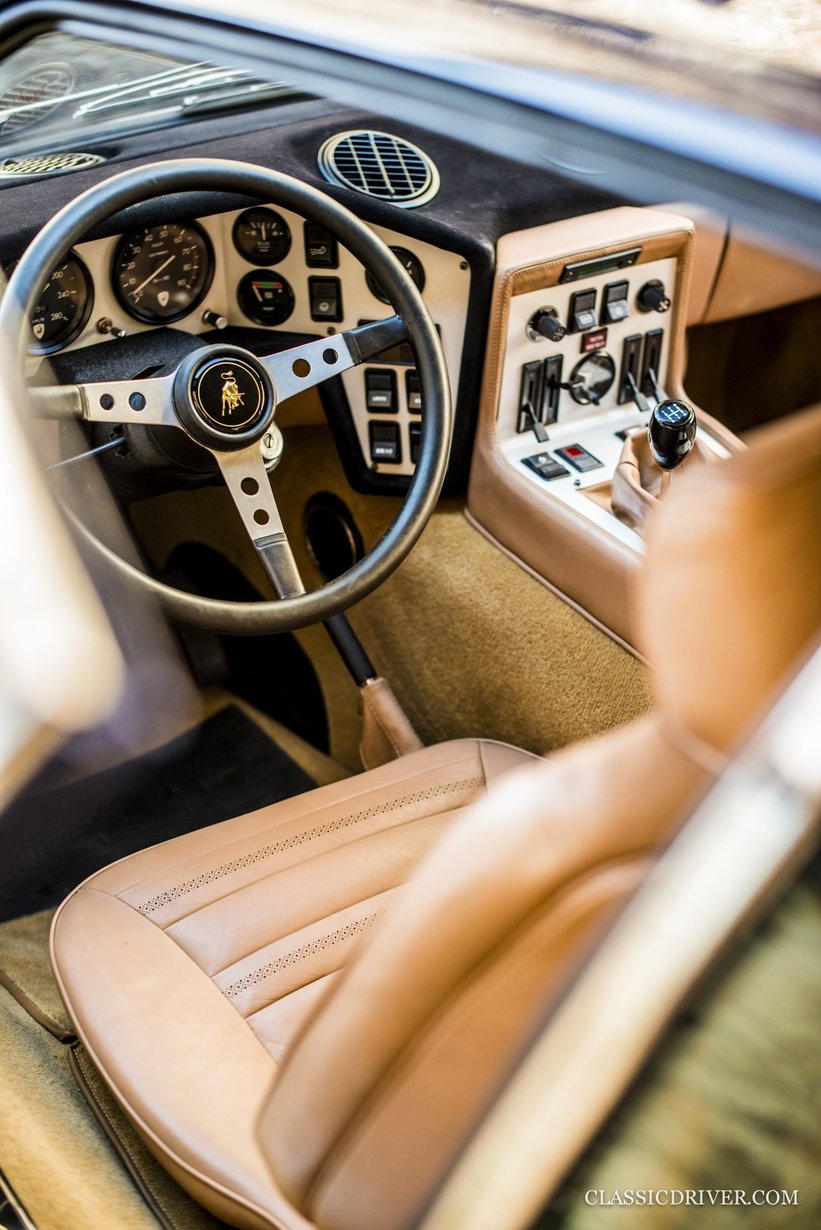
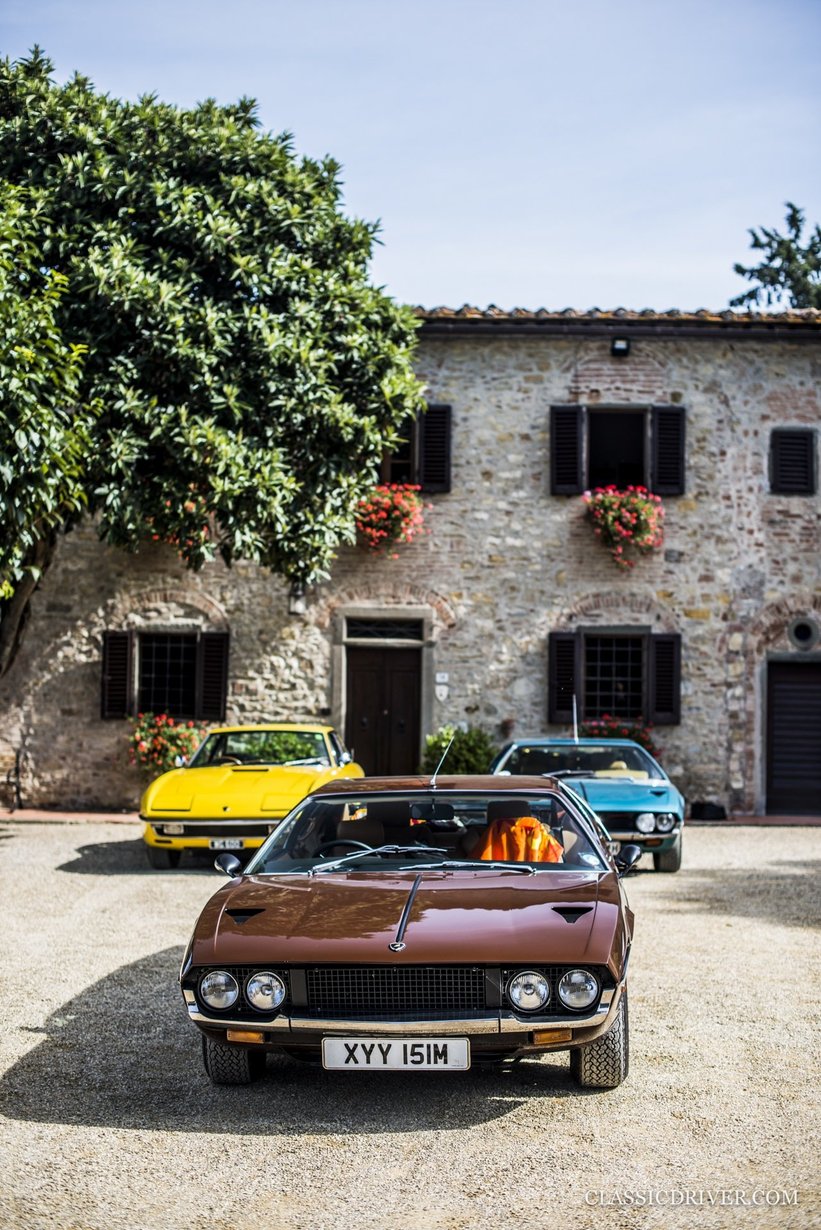
As impressive as Gandini’s GT sits on the road, the driving experience is equally special. The seats are deep like those in a gentlemen’s club and shaped for hefty post-War Italian frames, the roof is flat, and the steering wheel is large and surprisingly far ahead of you. You sit with your neck reclined and arms and legs stretched out straight behind the dash. Still, the Espada is easier to control than its heady combination of power, weight, and size would suggest. You can hang onto first gear until 100kph, but the most glorious sound is served up between 3,000rpm and 5,000rpm in second and third gears. Needless to say, roaring through Umbrian villages and endless country roads as part of this extraordinary procession is a real pleasure!

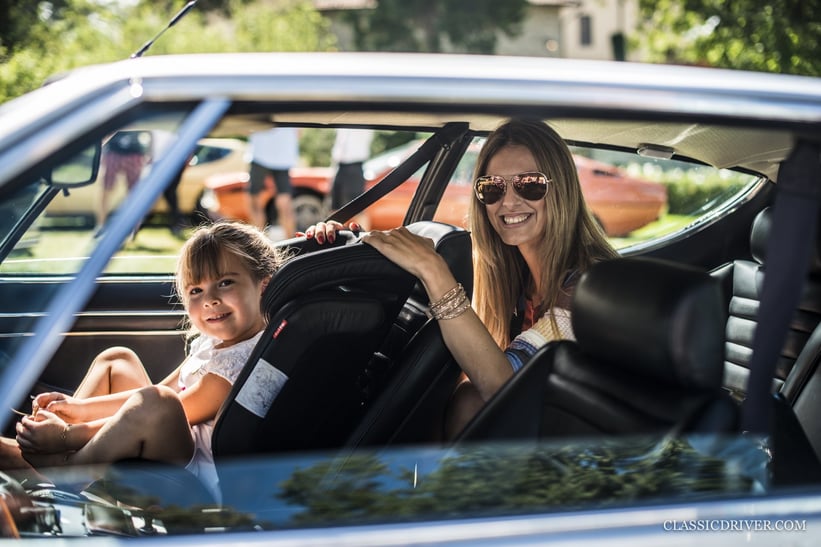
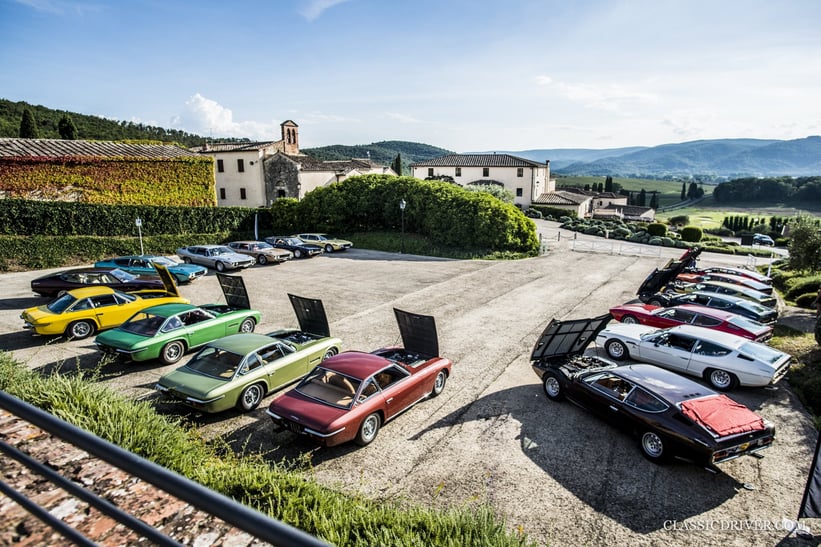
In the meantime, the morning fog has given way to fierce Italian sunshine – and in the Espada, with its panoramic glass, it’s as warm as a greenhouse. The engines demand to be cooled, too, and at our first coffee stop, the air flickers over the opened bonnets. As usual with Lamborghini from the 1970s, the range of paint shades is as colourful as it is daring, comprising everything from orange and champagne to metallic turquoise.
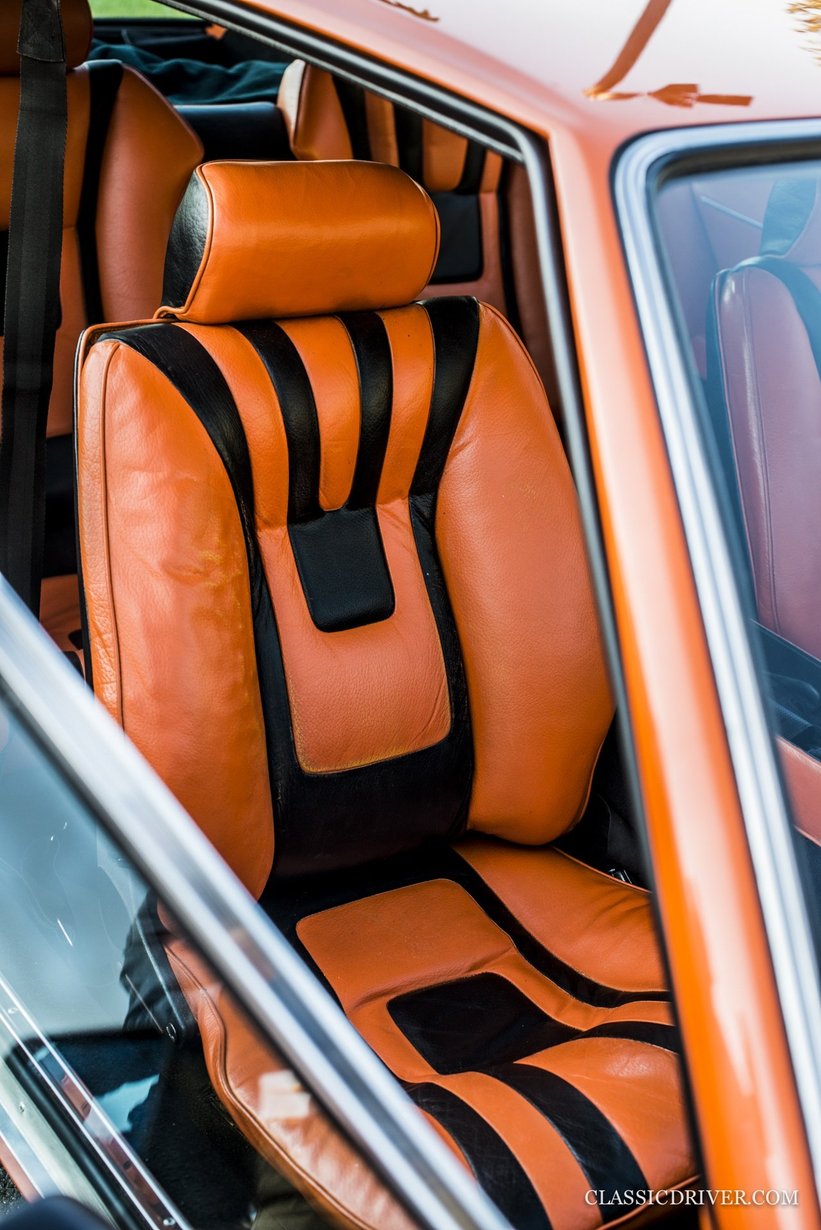
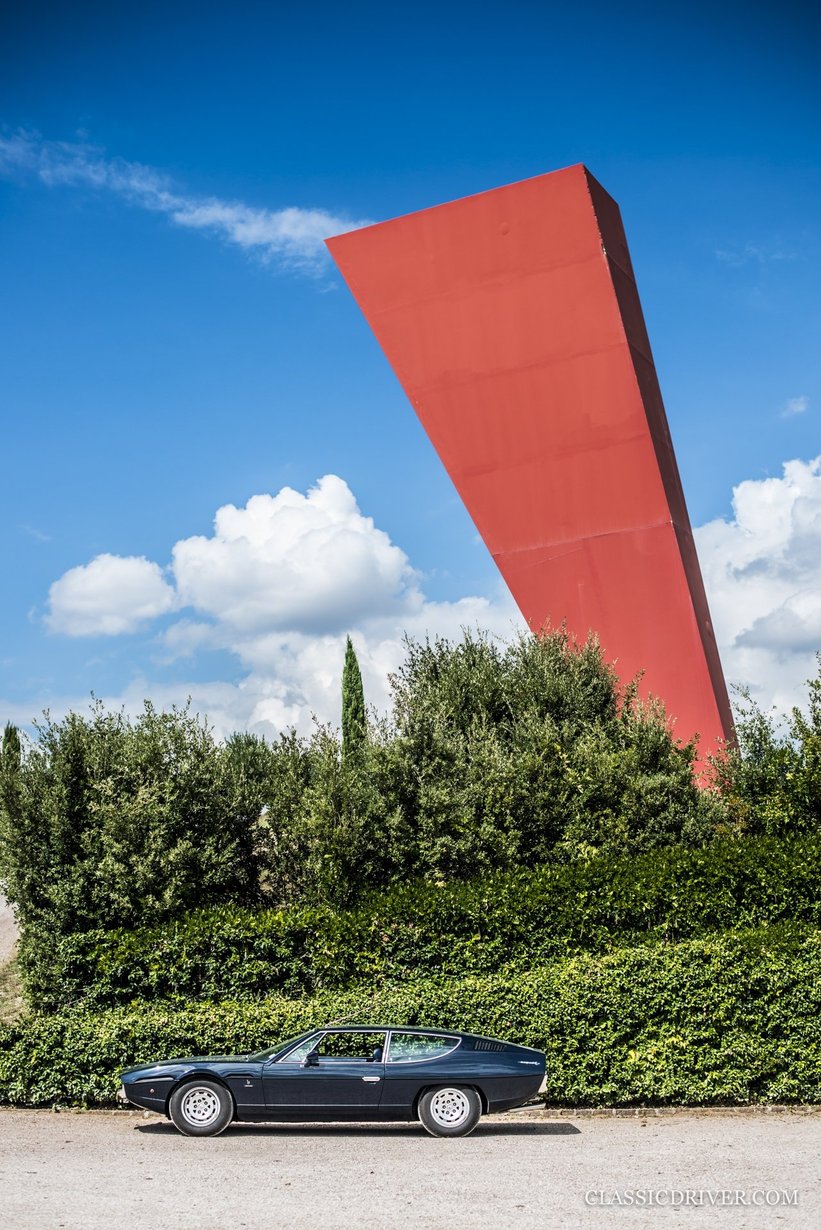
The interior colours, too, are equally audacious, from cherry red and pistachio to the psychedelic black-and-orange patterns of the example from the ultra-rare VIP collection. The number plates, meanwhile, reveal the countries from which the owners brought their Espadas: Germany, France, Belgium, Holland, England, and Switzerland are all represented. While no one is present from Italy, a Swiss owner has brought along his wife and daughter, just as Ferruccio Lamborghini would have once imagined.
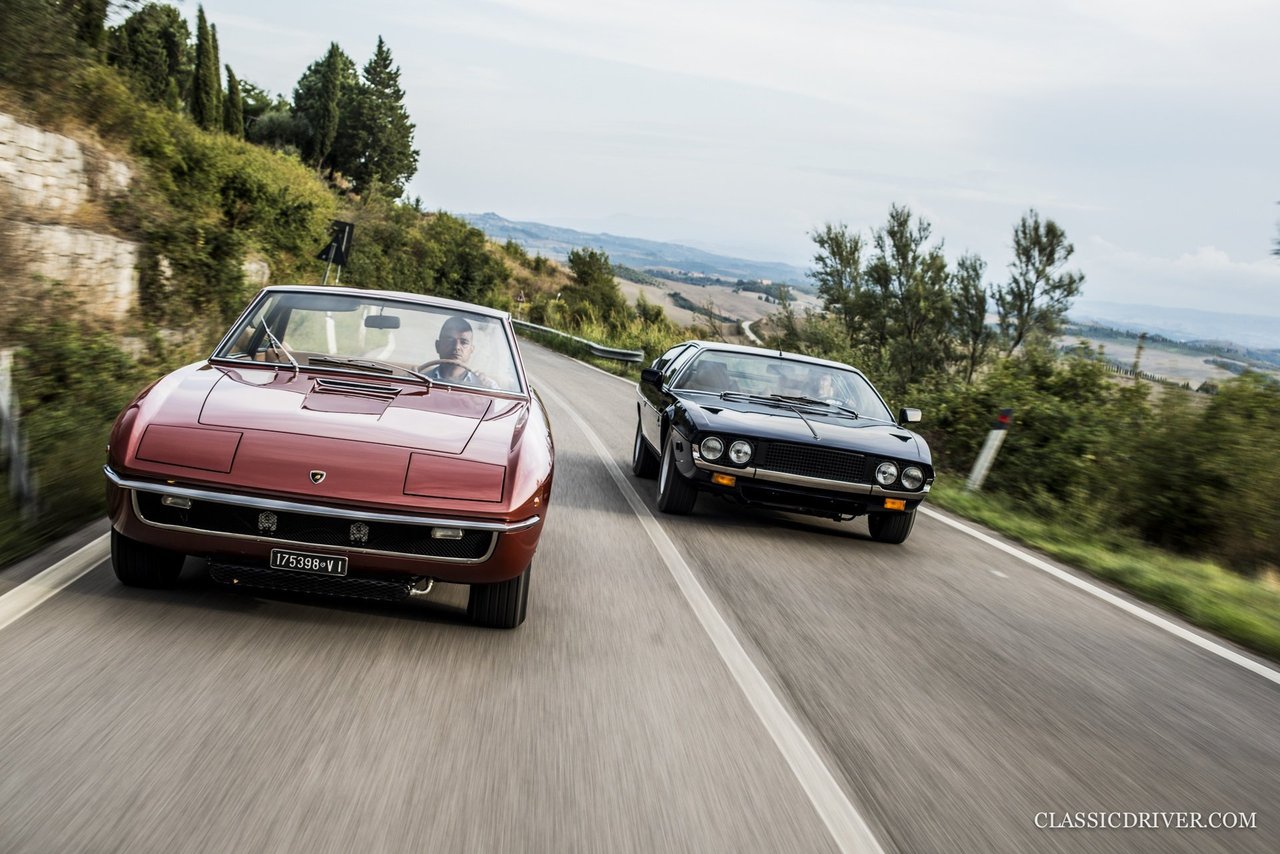
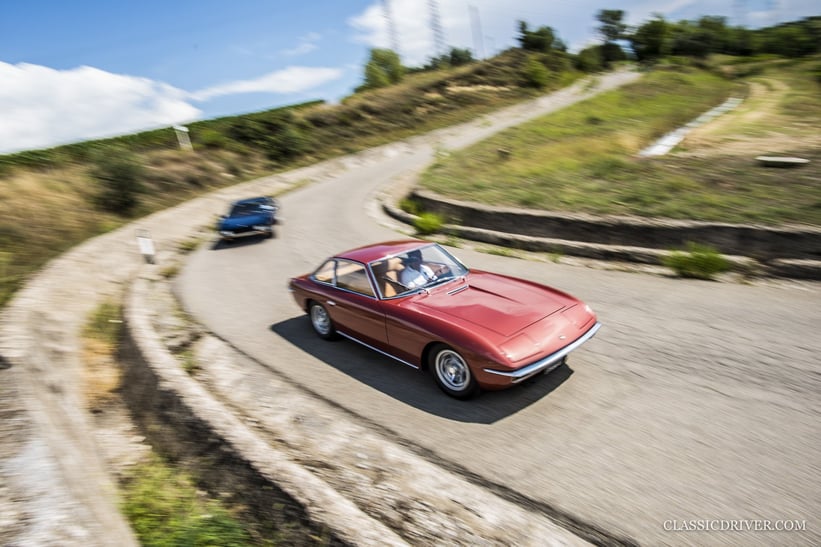
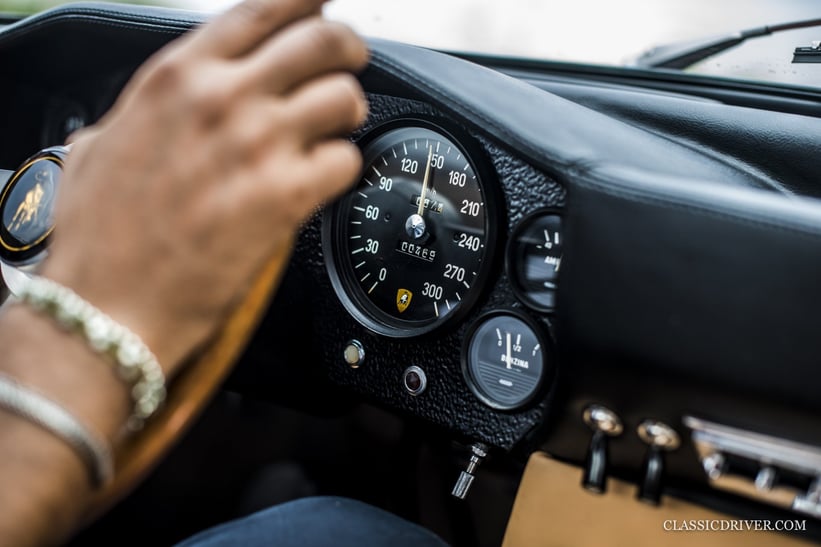
On the second day, we switch to the Lamborghini Islero – and it’s only when you take a seat that you realise this car comes from a different era. While the Espada breathes the spirit of the 1970s, the Islero is very much a variation of the 1960s sports car theme and takes up where the 400 GT left off. The seating position is more pleasant, the headroom greater, and the all-round visibility better. And while driving, it quickly becomes apparent that the Islero is the lighter and firmer-sprung car. Although its handling requires a deft touch, the twelve-cylinder coupé feels so agile on the fabulous curves and hilly landscapes of Tuscany, so much so that its lack of success is difficult to comprehend. The rare Lamborghini has been finding its feet among collectors and good, well-preserved examples are now fetching 250,000 euros. In 2015, a lavishly restored Islero S even sold in California for 400,000 US dollars. But then again, prices of the Espada are also rising. A few years ago, you could find examples for under 30,000 euros. But today, you’ll have to pay four or five times that sum.
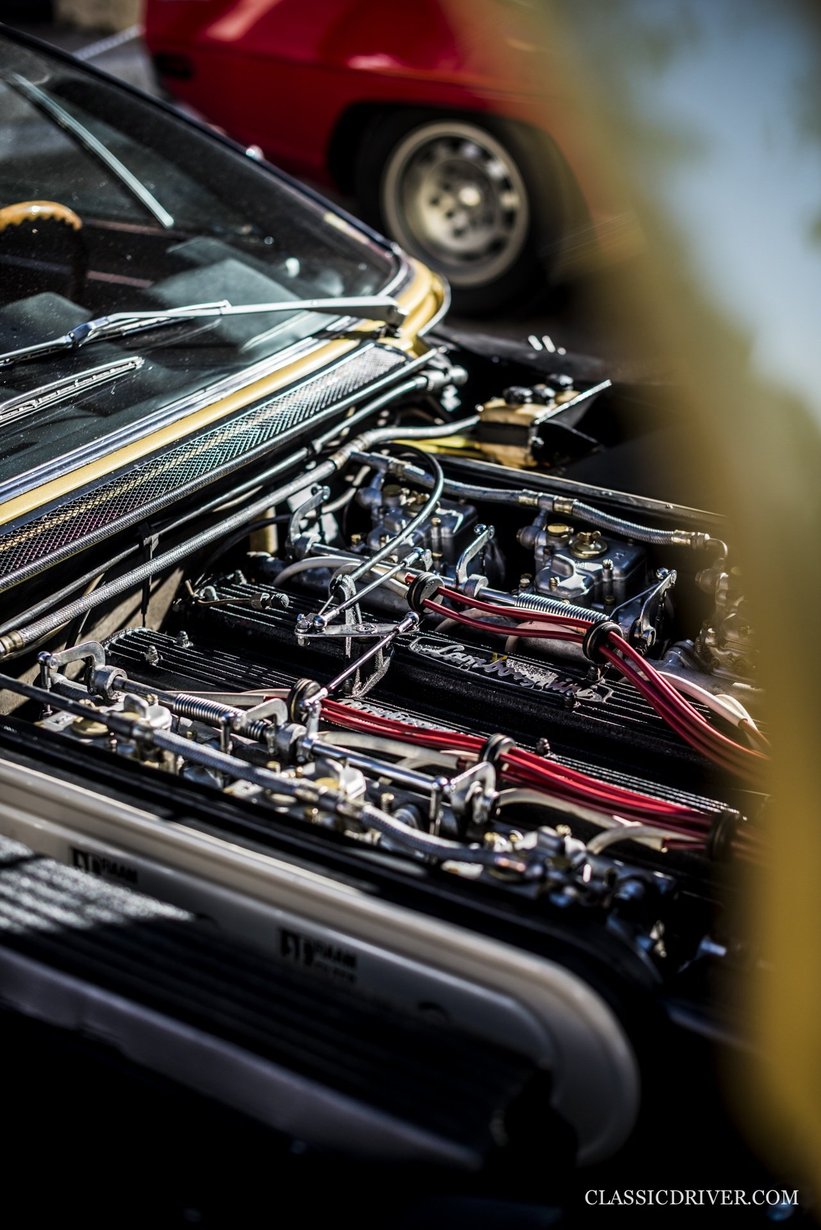
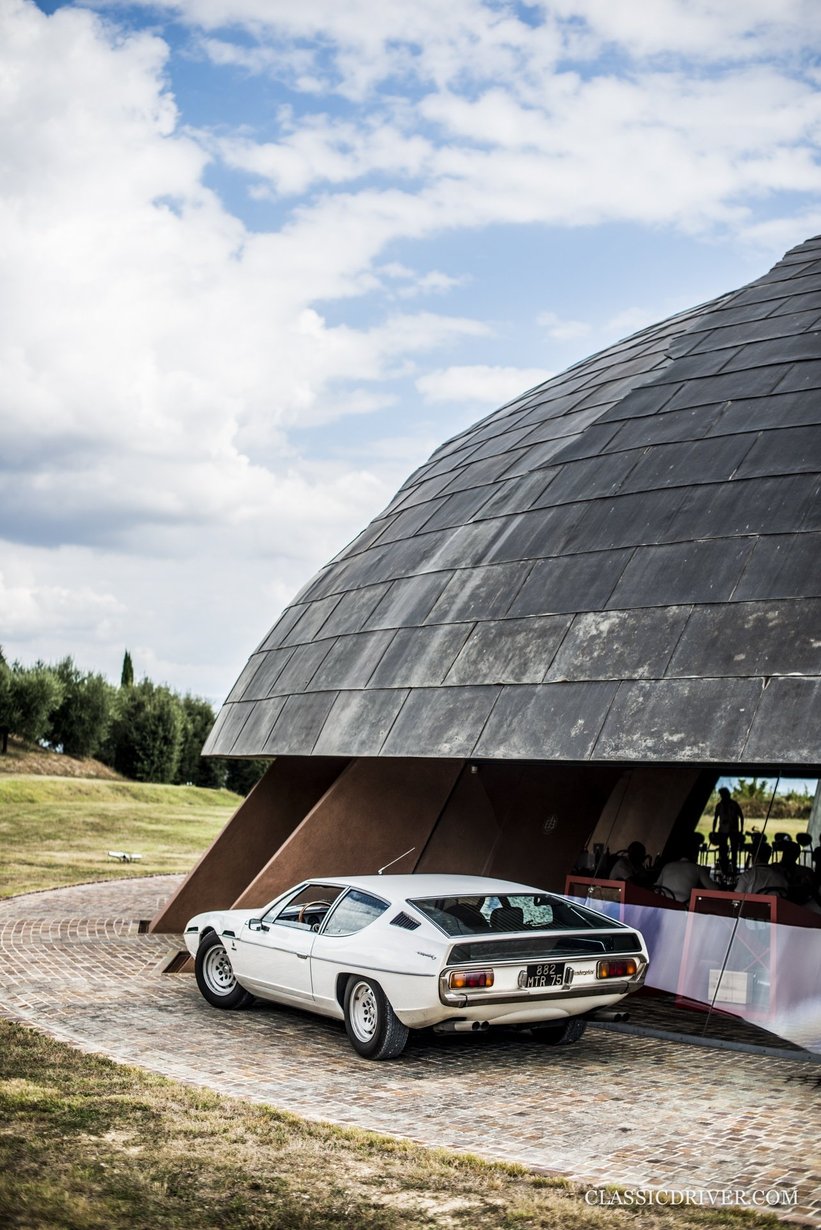
It’s gratifying that despite this development, the two cars continue to be driven as spiritedly as they were intended on the Jubilee tour. The fact that here and there along the route cars were parked at the side of the road and tended to by the following mechanics is almost a matter of honour for Italian divas such as the Espada and the Islero!
Photos: Rémi Dargegen for Classic © 2018














































































































